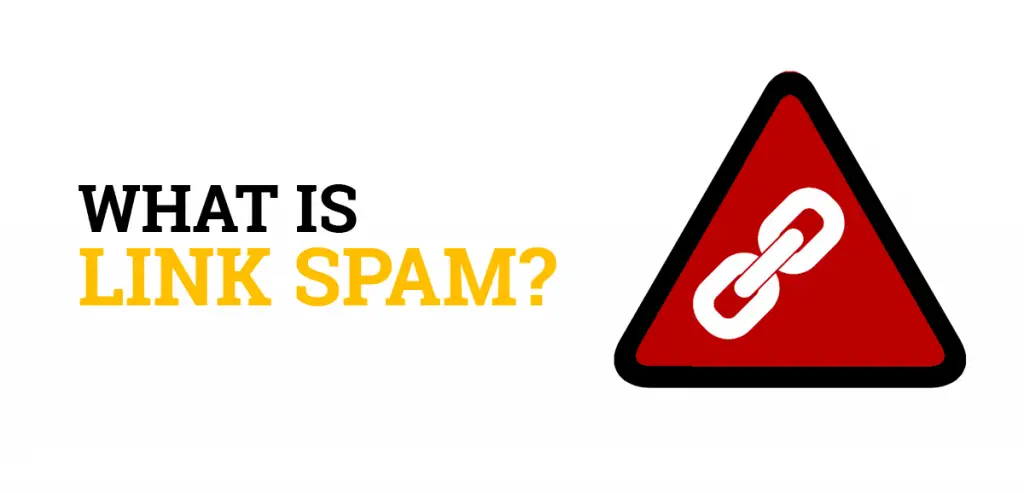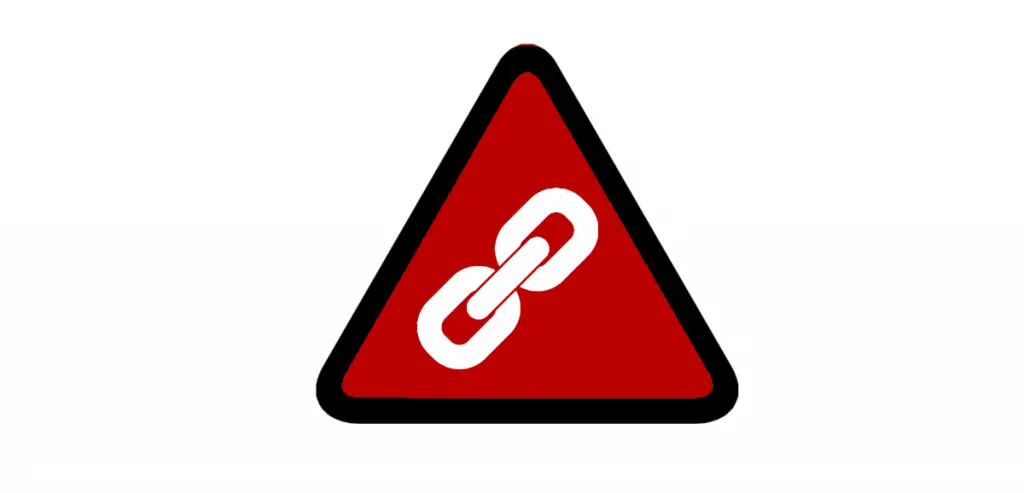In this article, we’ll answer the question, “what is link spam?”
But we’ll also go much deeper than just the definition of link spamming for SEO.
As you’ll discover below, there are numerous methods for creating spammy links, and if you’re not careful, your website could suffer a ranking penalty or deindexing of content during an algorithm update in Google, Yahoo, or Bing.
So it’s important to understand what link spam is, the various types of spam backlinks, and Google’s guidance on keeping your site safe from an algorithmic penalty.

What Is Link Spam?
Link spam is the posting of links on websites, discussion forums, blog comments, directories, or any other online site where the links between pages are not earned by merit. Link spam is used to create backlinks on pages and websites regardless of context or user experience to manipulate search engine rankings.
Types of Link Spam
Paid Link Spam
Exchanging money for links, goods and services for links, or sending someone free products in exchange for including a link in an article are all considered paid link spam techniques that should be avoided.
Spammy Link Exchanges
Excessive link exchanges where you make an agreement with a site owner to link to them if they link to you for the purpose of cross-linking in SEO is a violation of Google’s Webmaster Guidelines.
Bait and Switch Link Spamming
Creating a piece of content to acquire organic links and then changing the content on that page or redirecting it to an unrelated web page is considered link spam.
Link Wheels
Creating multiple websites and linking each property to each other to form a link wheel for the sole purpose of passing PageRank is a spammy linking practice. An example would be site A linking to site B that links to site C which then links to the destination site D for improving PageRank. When choosing a link building company, you need to make sure they are not using this backlink practice. See this related guide on the best link building services for agencies that are safe to use.
Sponsored Guest Posts
Participating in sponsored guest posts where money, goods and services, or free products are exchanged for a guest post with a backlink inserted in the content or author’s bio is an unnatural link building method Google’s algorithm actively works to detect. All links in such types of posts should be labeled with the rel=”sponsored” attribute.
Requiring Links In Contracts
Requiring links as part of a Terms of Service, contract, or similar arrangement are considered spam backlinks and should not be used as a link building tactic.
Low-Quality Press Releases
Submitting low-quality press releases for the sole purpose of generating links from sites that syndicate press release content is a known link spam technique that Google considers to be manipulative.
Directory Spam
Creating profiles on directory sites and linking back to your website at scale is a spammy backlink method that can get your site penalized during a Google algorithm update.
Link Farms
Setting up a group of websites that all link to other sites in the group for the purpose of increasing SEO rankings is called a link farm. Link farming is a bad search engine optimization technique that should be avoided.
Forum Link Spam
Forum backlink spamming happens in multiple formats. The first is creating profiles on nofollow and dofollow Forum backlink sites just to put a backlink to your site. The second is putting keyword-rich links in a Forum signature and commenting on a lot of posts to increase the number of backlinks. And third, adding direct links inside Forum comments to pass PageRank SEO value.
Profile Link Spamming
Posting links on profile pages of websites with high domain authority is another type of link spamming that search engines like Google oppose.
Blog Comment Spam
Posting links in blog comments is a popular link spam technique that does more harm than good for the target site owner. Having a high number of blog comment links is a red flag to Google’s algorithm that a backlink spamming practice is being used for search ranking manipulation.
Hidden Spam Links
Hidden links are a type of spammy links that are used to transfer PageRank without the visitor knowing they exist on the website. Hidden links are often put into images, website code, or camouflaged with CSS to look like the normal text on a page that’s not clickable.
301 Redirect Spam
Creating backlinks through 301 redirects is a form of link manipulation that’s labeled as black hat SEO. And if you’re buying expired domains or acquiring sites with a large number of backlinks for the sole purpose of increasing another site’s PageRank for SEO, then you can suffer a penalty from this risky link spamming technique. See this guide on how to redirect backlinks for more details.
Article Marketing Spam
Publishing low-quality content on article directories or content submission sites with the only purpose of getting a link back to your homepage or an individual web page is link spamming.
Single Post Blog Spam
Creating a free account on Web 2.0 sites like WordPress, Blogger, Tumblr, or Wix, and then posting a single blog post along with a link back to your site is a common spammy link tactic that Google’s algorithm is well aware of and will discredit that link.
Site-Wide Links
Posting a site-wide link in the footer, sidebar, or navigation menu is not a safe practice for link building. And overuse of any type of anchor text using this method can get your site penalized in the search engines.
Scholarship Spam
Creating a scholarship to award students for the sole purpose of acquiring links from universities and college sites (.edu) is a link spamming method that’s been much abused for SEO. And Google actively hands out manual action penalties for it in Google Search Console.
Other Spammy Links
There are many other types of spammy links and sometimes you may have link spam pointing to your website that you did not create. And in some cases, these backlinks could be hurting your search engine optimization performance.
Google Link Spam Update Details
In 2021, Google released four link spam updates: 2 in June, 1 in July, and 1 in November. These updates were focused on specific types of spamming techniques: paid links, affiliate links, and sponsored guest posting.
Google also published two guides with precise instructions and best practices for preventing portions of your site from being abused by spam and qualifying links correctly to avoid a link spam penalty.
The most important tips from those guides include:
- Labeling affiliate links: Affiliate links should be marked as rel=”sponsored”.
- Labeling sponsored posts: Sponsored posts with links should be marked with rel=”sponsored” or rel=”nofollow”.
- Accepting too many sponsored posts: If there is a large number of sponsored posts on your site then it could be affected by an algorithmic penalty because it determines that your site is being used for unnatural link building.
Google also offers these protective measures against link spamming techniques against user-generated content:
- Block automatic account creation using Google’s reCAPTCHA or comparable verification tool
- Use moderation functions to create comments and profiles so that users are only allowed to post links after they have proven to be trustworthy.
- Use the noindex attribute on pages to prevent untrustworthy content from being displayed in Google search.
- Keep website software up-to-date and use automated anti-spam systems, such as Akismet.

Link Spam Summary
I hope you enjoyed this guide answering the question about what is link spam.
As you discovered, link spamming is a way to create backlinks on pages and websites to manipulate search engine rankings in Google, Yahoo, and Bing. And these spam techniques can get your website penalized or deindexed from the search engines if you choose to participate in them.

SEO Chatter is dedicated to teaching the fundamentals of search engine marketing to help marketers understand how to increase organic website traffic and improve search engine rankings.
